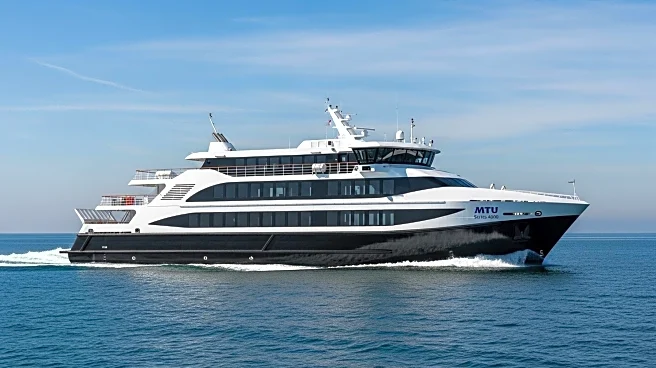Rapid Read • 7 min read
Oceanbird has unveiled its first prototype wing sail at the Orsesund DryDocks in Landskrona, Sweden, marking a significant advancement in wind-assisted propulsion technology. The prototype, standing 40 meters tall and 14 meters wide, demonstrated its ability to unfold and rotate fully. Oceanbird, a partnership between Wallenius Lines and Alfa Laval, aims to commercialize this technology by installing the first sail on a vessel in 2026. The wing sail is designed to reduce fuel consumption and emissions, potentially achieving up to a 90% reduction in emissions under optimal conditions.
AD
The introduction of wind-assisted propulsion technology represents a major step towards reducing the maritime industry's carbon footprint. By harnessing wind power, Oceanbird's wing sail can significantly lower fuel consumption and emissions, contributing to global sustainability goals. This innovation could lead to the development of a new industry in Sweden, combining engineering, sustainability, and maritime leadership. The successful implementation of this technology could inspire other companies to explore wind propulsion, further advancing the industry's green transformation.
Oceanbird plans to assemble a second wing sail this fall, which will be installed on the Wallenius Wilhelmsen vessel Tirranna in early 2026. The company will conduct tests aboard the operational vessel to evaluate the sail's performance. As interest in wind-assisted propulsion grows, more commercial vessels may adopt similar technologies, leading to widespread fuel savings and emissions reductions.
The development of wind-assisted propulsion raises questions about the integration of traditional and renewable energy sources in maritime transport. The industry must address challenges related to the scalability and reliability of wind propulsion systems. Additionally, the shift towards sustainable practices may impact regulatory frameworks and require new standards for vessel design and operation.
AD
More Stories You Might Enjoy











